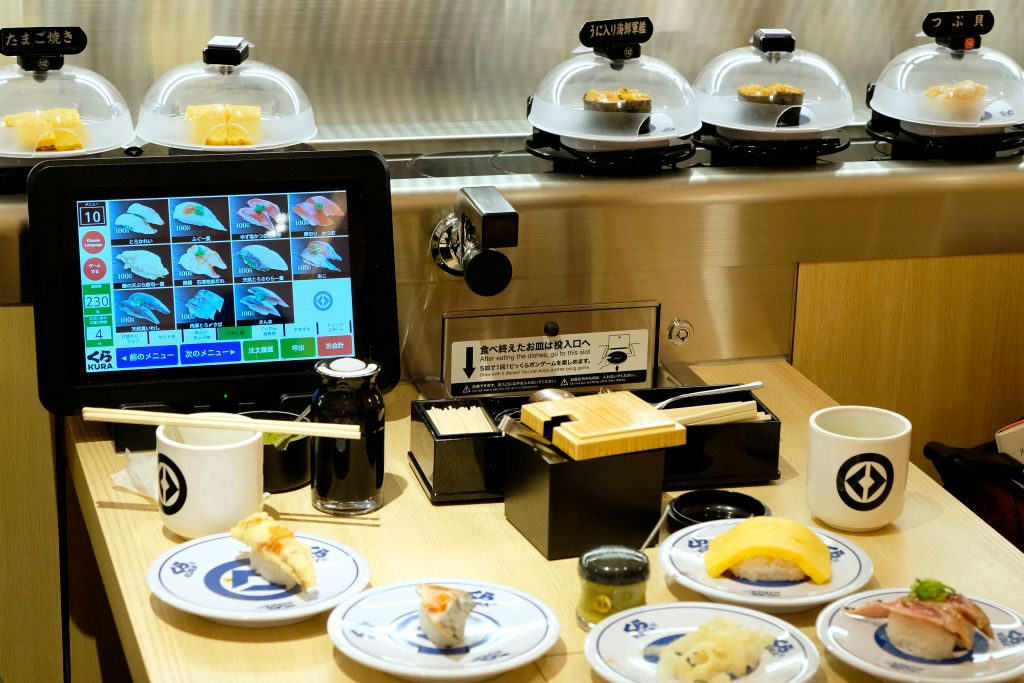
In the latest edition of people throwing out their morals for five seconds of fame, a new trend in Japan has people committing acts of “sushi terrorism”—filming themselves violating food safety at sushi conveyor belt restaurants.
In one video that has gained over 22 million views, a man is seen licking a soy sauce bottle and cup and touching the sushi as it passes by on the conveyor belt at a Sushiro restaurant. In another viral incident at the chain Hamazushi, a customer dropped wasabi on another patron’s sushi as it passed by their table.
The videos have caused outrage across Japan, where sushi belts have been common since the late 1950s and prompted some sushi chains to take legal action against the “sushi terrorists.”
“Not even just rude but can also harm someone severely, people with allergies exist!!!!!!” wrote one Instagram commenter. “I sure hope that this restaurant takes legal action,” wrote another. Two of the viral videos appear to have been taken down.
Food & Life Companies Ltd., Sushiro’s parent company, told the Mainichi Shimbun that it would work with law enforcement to find the customers involved and take criminal and civil action.
A post shared by Almost (@almost.co)
In the meantime, companies are working to increase food safety measures to bring uneasy customers back to their restaurants. In a statement to TIME, Food & Life Companies Ltd. said “As a first-aid countermeasure, for all Sushiro stores in Japan, if a customer feels uneasy about the tableware and seasonings on the table, they can let us know and we will replace them with disinfected ones that are stored separately.”
The Kura Sushi chain says they plan to put specialized covers on all of their conveyor belt sushi dishes, while Hamazushi plans to move forward with removing their conveyor belts entirely, according to Unseen Japan.
Food & Life Companies Ltd. told TIME it is working on implementing a more permanent response to the issue, in case the trend outlives its social media lifespan. But companies will have to move fast to curb the problem while it’s still a trend. After all, the internet moves faster.
More Must-Reads from TIME
- Cybersecurity Experts Are Sounding the Alarm on DOGE
- Meet the 2025 Women of the Year
- The Harsh Truth About Disability Inclusion
- Why Do More Young Adults Have Cancer?
- Colman Domingo Leads With Radical Love
- How to Get Better at Doing Things Alone
- Michelle Zauner Stares Down the Darkness
Write to Simmone Shah at simmone.shah@time.com